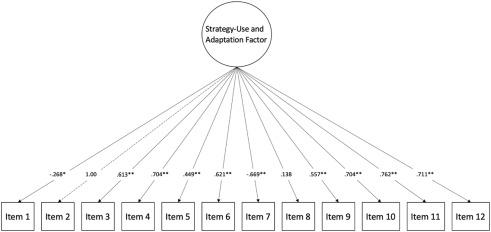当前位置:
X-MOL 学术
›
Comput. Educ.
›
论文详情
Our official English website, www.x-mol.net, welcomes your
feedback! (Note: you will need to create a separate account there.)
Students’ active cognitive engagement with instructional videos predicts STEM learning
Computers & Education ( IF 8.9 ) Pub Date : 2024-04-10 , DOI: 10.1016/j.compedu.2024.105050 Shelbi L. Kuhlmann , Robert Plumley , Monty Evans , Matthew L. Bernacki , Jeffrey A. Greene , Kelly A. Hogan , Michael Berro , Kathleen Gates , Abigail Panter
Computers & Education ( IF 8.9 ) Pub Date : 2024-04-10 , DOI: 10.1016/j.compedu.2024.105050 Shelbi L. Kuhlmann , Robert Plumley , Monty Evans , Matthew L. Bernacki , Jeffrey A. Greene , Kelly A. Hogan , Michael Berro , Kathleen Gates , Abigail Panter

|
The efficacy of well-designed instructional videos for STEM learning is largely reliant on how actively students cognitively engage with them. Students' ability to actively engage with videos likely depends upon individual characteristics like their prior knowledge. In this study, we investigated how digital trace data could be used as indicators of students' cognitive engagement with instructional videos, how such engagement predicted learning, and how prior knowledge moderated that relationship. One hundred twenty-eight biology undergraduate students learned with a series of instructional videos and took a biology unit exam one week later. We conducted sequence mining on the digital events of students' video-watching behaviors to capture the most commonly occurring sequences. Twenty-six sequences emerged and were aggregated into four groups indicative of cognitive engagement: , and . Results indicated more active engagement via speed watching and rewinding behaviors positively predicted unit exam scores, but only for students with lower prior knowledge. These findings suggest that the ways students cognitively engage with videos predict how they will learn from them, that these relations are dependent upon their prior knowledge, and that researchers can measure students’ cognitive engagement with instructional videos via mining digital log data. This research emphasizes the importance of active cognitive engagement with video interface tools and the need for students to accurately calibrate their learning behaviors in relation to their prior knowledge when learning from videos.
中文翻译:

学生对教学视频的积极认知参与预示着 STEM 学习
精心设计的 STEM 学习教学视频的效果在很大程度上取决于学生认知参与的积极程度。学生积极参与视频的能力可能取决于个人特征,例如他们的先验知识。在这项研究中,我们研究了如何使用数字跟踪数据作为学生对教学视频的认知参与度的指标,这种参与度如何预测学习,以及先验知识如何调节这种关系。一百二十八名生物学本科生通过一系列教学视频进行学习,并在一周后参加了生物学单元考试。我们对学生视频观看行为的数字事件进行序列挖掘,以捕获最常见的序列。出现了 26 个序列,并聚合成表示认知参与度的四组: 、 和 。结果表明,通过快速观看和倒带行为进行更积极的参与可以积极预测单元考试成绩,但仅限于先验知识较低的学生。这些发现表明,学生认知参与视频的方式预测了他们将如何从中学习,这些关系取决于他们的先验知识,并且研究人员可以通过挖掘数字日志数据来衡量学生对教学视频的认知参与。这项研究强调了使用视频界面工具进行积极认知参与的重要性,以及学生在从视频学习时根据其先验知识准确校准其学习行为的需要。
更新日期:2024-04-10
中文翻译:

学生对教学视频的积极认知参与预示着 STEM 学习
精心设计的 STEM 学习教学视频的效果在很大程度上取决于学生认知参与的积极程度。学生积极参与视频的能力可能取决于个人特征,例如他们的先验知识。在这项研究中,我们研究了如何使用数字跟踪数据作为学生对教学视频的认知参与度的指标,这种参与度如何预测学习,以及先验知识如何调节这种关系。一百二十八名生物学本科生通过一系列教学视频进行学习,并在一周后参加了生物学单元考试。我们对学生视频观看行为的数字事件进行序列挖掘,以捕获最常见的序列。出现了 26 个序列,并聚合成表示认知参与度的四组: 、 和 。结果表明,通过快速观看和倒带行为进行更积极的参与可以积极预测单元考试成绩,但仅限于先验知识较低的学生。这些发现表明,学生认知参与视频的方式预测了他们将如何从中学习,这些关系取决于他们的先验知识,并且研究人员可以通过挖掘数字日志数据来衡量学生对教学视频的认知参与。这项研究强调了使用视频界面工具进行积极认知参与的重要性,以及学生在从视频学习时根据其先验知识准确校准其学习行为的需要。
















































 京公网安备 11010802027423号
京公网安备 11010802027423号